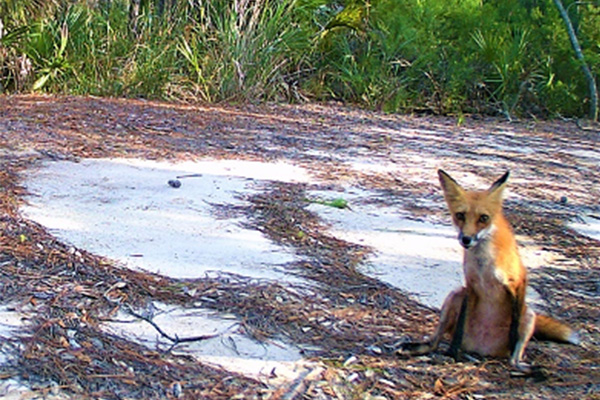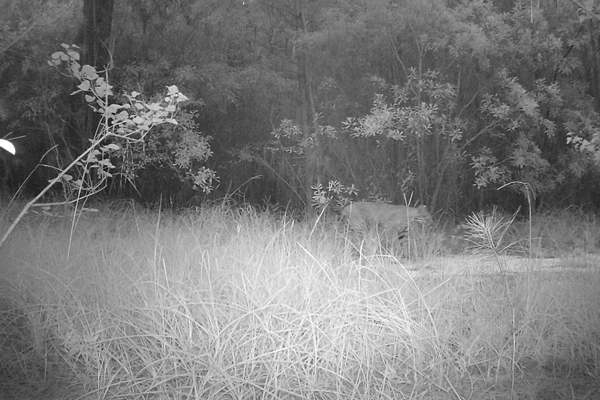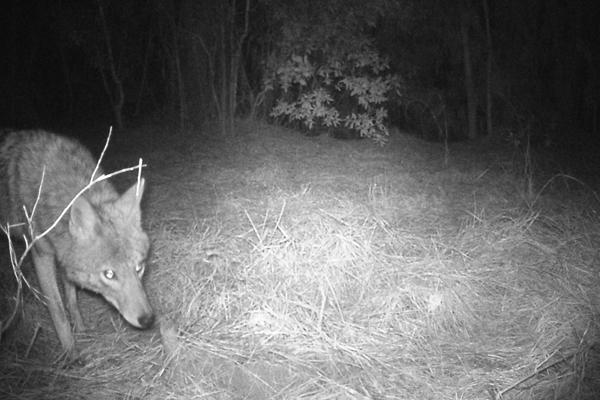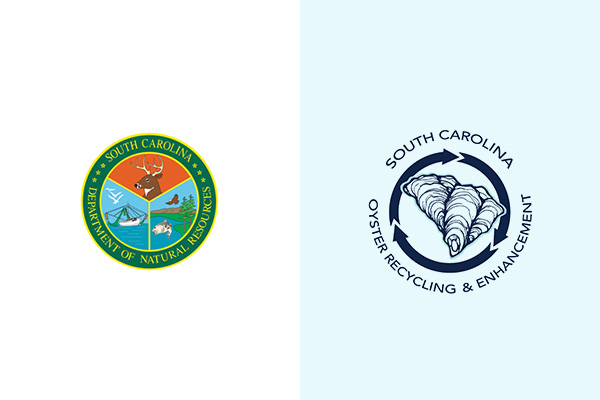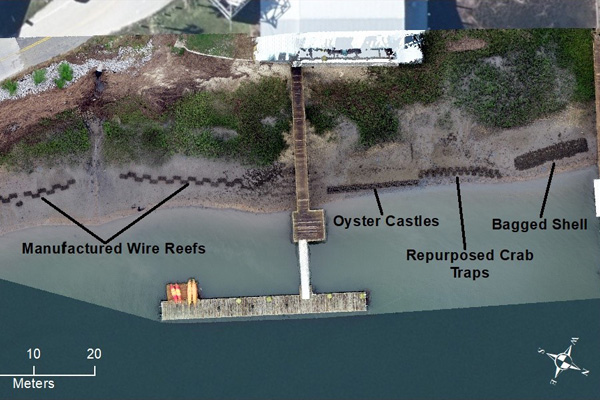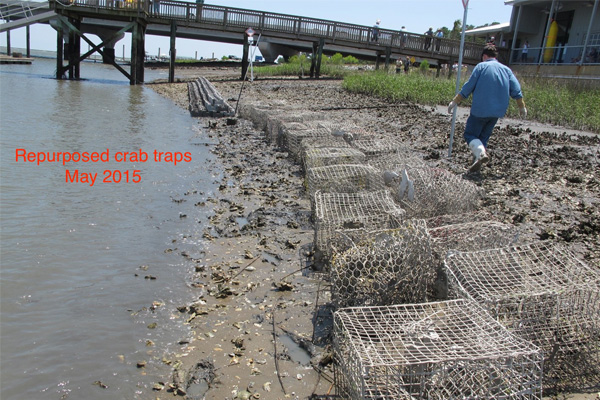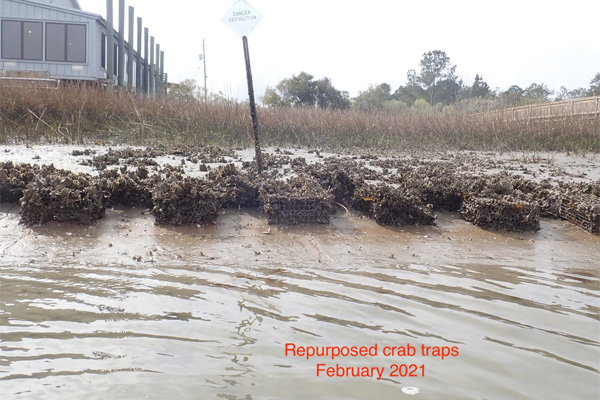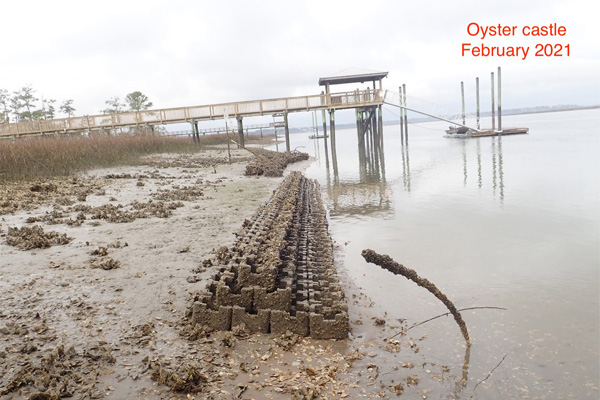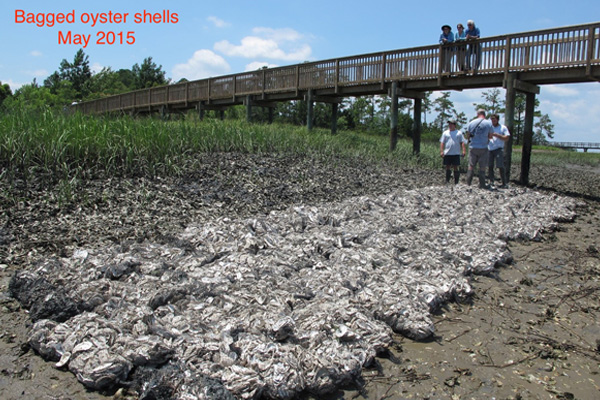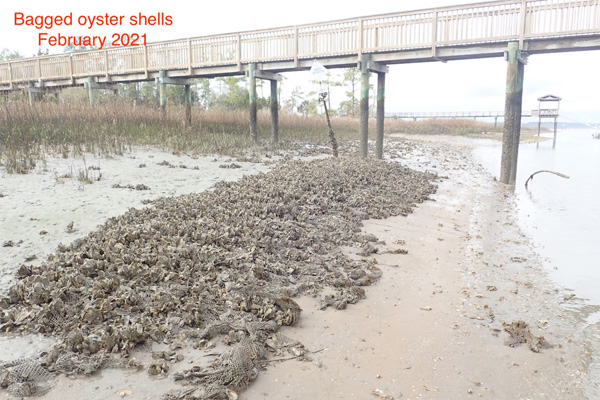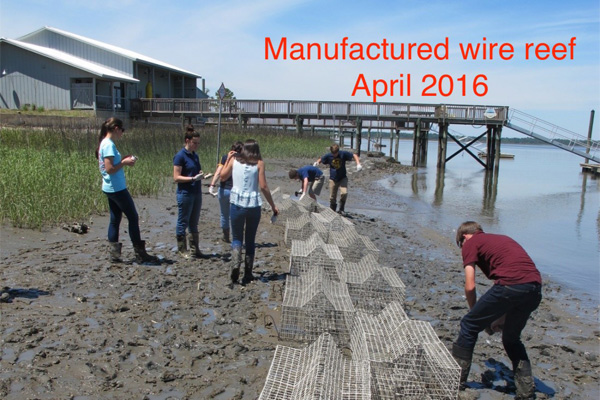Research Projects
Research is a critical tool to understand what we know about the Port Royal Sound, what questions are left to be answered, and how to prioritize future research. In the Port Royal Sound Research video series, we visit with local scientists doing research on the Sound to learn what they do, why they love it, and why it is so important.
Videos funded by a grant through Dominion Energy and produced by Harden Creative
In this episode, Dr. Eric Montie and Alyssa Marian from the University of South Carolina Beaufort share about their work with dolphins.
In this episode, Gary Sundin and Graham Wagner from South Carolina DNR share about their work with oysters.
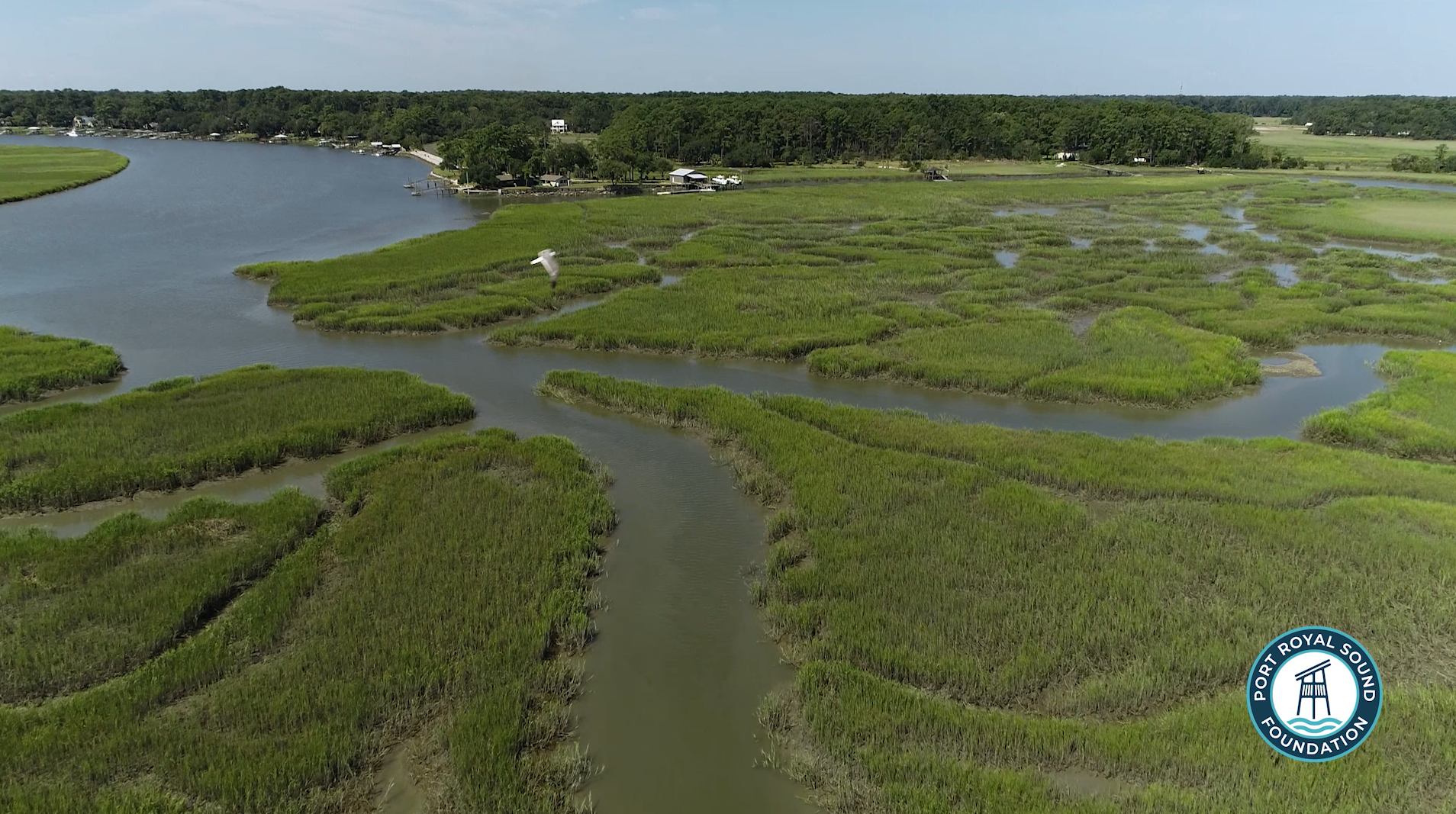
State of the Sound Series
The State of the Sound Series recognizes important research being done on the Port Royal Sound, encourages future research, and serves as a resource for the scientific community doing work in our area. The first publication in this series is the Port Royal Sound Environmental Quality Assessment (PRS EQA). This publication examines historic water quality data on the Port Royal Sound watershed, providing critical baseline data for future research in the area and highlighting sites that may benefit from more focused study.
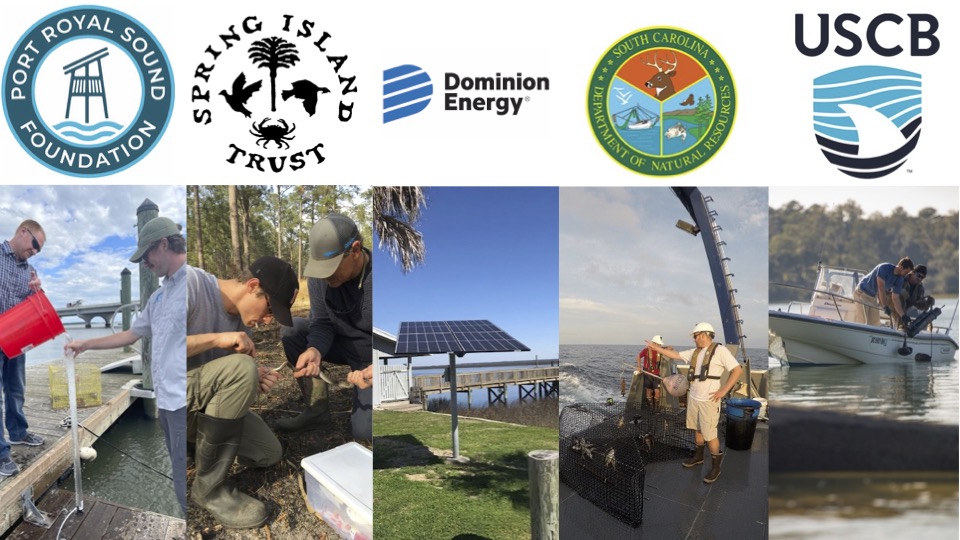
Annual State of the Sound Symposium
The Port Royal Sound Foundation’s annual State of the Sound Symposium convenes local researchers to share knowledge about the ecology of the Port Royal Sound. The inaugural event was held on February 11, 2022. Moderated by Dr. Chris Marsh, the event hosted 11 area experts from SC Department of Natural Resources (SCDNR) and University of South Carolina Beaufort (USCB) who presented a series of short talks covering an array of topics including crustaceans, fish, underwater soundscapes, dolphins, shorebirds, water quality, geology, and land use. In January 2023, the 2nd Annual Symposium welcomed four scientists from SCDNR and USCB to launch the first publication in our State of the Sound Series and explore how future research can help us better understand and protect this incredible resource in the heart of the Lowcountry.
Citizen Science Program
The Port Royal Sound Foundation Citizen Science Program (PRSF CSP) inspires conservation of the Port Royal Sound by engaging local community members and organizations in the collection and compilation of water quality data. With this long-term, widespread monitoring data, we are better prepared to take action to protect the vital environmental resource at the center of our culture and community.
This is a collaborative partnership with the University of South Carolina – Beaufort and Clemson Extension Adopt-A-Stream.
Click here to view current data for all of South Carolina. Zoom in on the Port Royal Sound to see the data being collected by our volunteers right in your backyard!
For more information, contact:
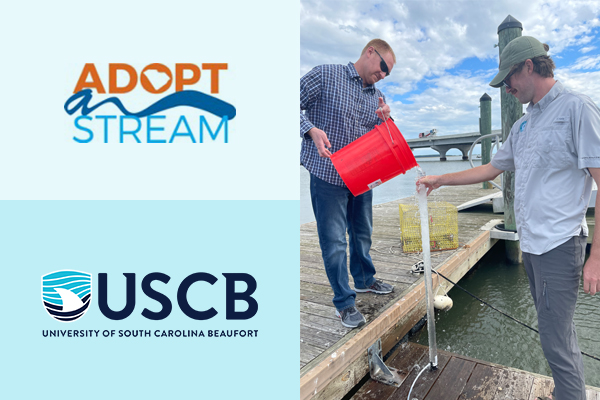
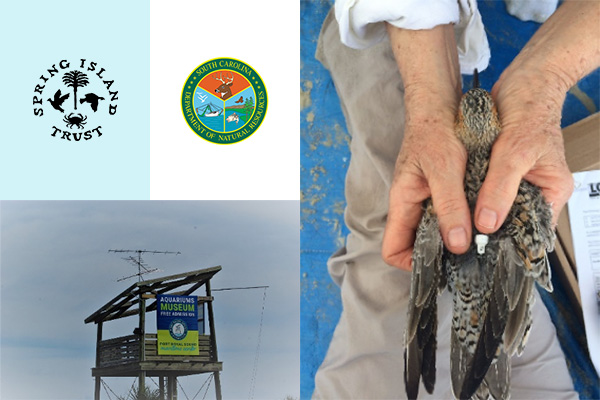
The Spring Island Trust Motus Tower
A third of bird populations in the United States are in decline, so understanding where critical habitat is and when it is used has become vital information. The Motus tracking system works by using automated radio telemetry arrays that “ping” and record any animal (birds, bats, insects) that has a corresponding tag. With these data points, researchers begin to connect the dots and potentially answer critically important questions that could help protect these important species.
We are proud to partner with The Spring Island Trust and the South Carolina Department of Natural Resources without whom none of this would be possible.
Hohonu Tide Gauge
Alongside partners, Hohonu deploys sensors that monitor water levels and transmit data to an online database. This tool allows real-time interpretation of tidal data and compares water levels against defined-thresholds to inform actions like closing roads or alerting communities to potential flooding. In the long-term, this data is being used by agencies like NOAA to better understand the impact of sea level rise, and environmental consulting firms can more precisely measure the impact of their coastal restoration projects.
Thank you to Beaufort County for their assistance in installing a Hohonu tide gauge on our Maritime Center dock.
Click the link below for a quick view, create an account for full access: https://dashboard.hohonu.io/map-page
Trail Cameras
What kinds of species inhabit the salt marshes and maritime forest adjacent to the Port Royal Sound Foundation? How much diversity can co-exist on a 108-acre plot of land? With the deployment of game cameras, we can track animal populations on this small 100+ acre preserve and answer questions about the Maritime Center’s backyard. By sorting through the photos captured on these cameras, we are understanding how healthy our deer population is and how many predators, such as bobcats and foxes, our nature preserve can support.
Dominion Energy Solar for Students
Renewable energy is a critical tool as the world looks ahead to a more sustainable future. Solar energy is one of the most well-known renewable resources, which uses solar panels to convert sunlight into electric power. The 1.2 kilowatt solar system outside the Maritime Center was provided by Dominion Energy through its Solar for Students program. Dominion Energy partners with the National Energy Education Development Project (NEED) to provide solar arrays and educational materials to partnering schools and nonprofits, like the Port Royal Sound Foundation. As part of this program, students learn about renewable energy and can track how much electric power our solar panel generates.
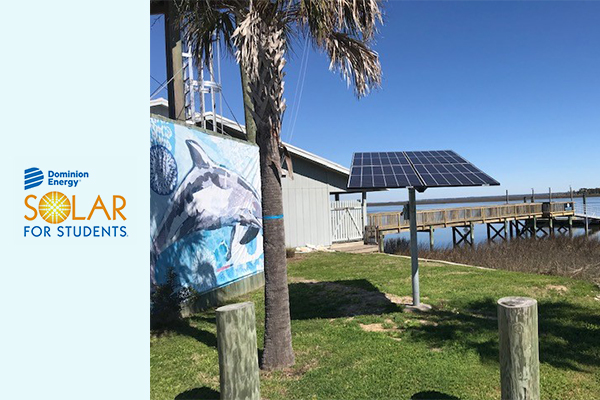
Oyster Research and Restoration by SCDNR
On May 16, 2015, the SCDNR Shellfish Research Section and S.C.O.R.E. gathered volunteers, stakeholders, and PRSF staff to install three types of oyster restoration structures at PRSF’s Sharon and Dick Stewart Maritime Center shoreline, as part of a collaborative project funded by the National Estuarine Research Reserve System (NERRS) Science Collaborative. The three types include repurposed derelict crab traps, oyster castles, and bagged oyster shells. In addition, manufactured wire reefs (MWR) were installed on April 19, 2016 by SCDNR Shellfish Research Section with funding from S.C. Sea Grant Consortium. These living shoreline structures are designed to provide substrate upon which larval oysters naturally attach and grow, creating dense intertidal oyster reefs. These reefs improve water quality, provide habitat for numerous marine species, and help protect shorelines from erosion. Since installation, these structures have recruited oysters and have been successful at capturing sediment, creating significant elevation increase behind the reef, in-turn leading to an expansion of marsh vegetation.
Chronolog
Anyone visiting the Maritime Center can participate in a citizen science project.
Chronolog – a new exhibit on the Maritime Center dock – will help track marsh changes through photos collected by you.
The goal of this new exhibit is to help us understand how our shoreline is changing with the help of artificial oyster reefs building our mud bank and planted marsh grass through restoration efforts.
Just follow 3 easy steps:
- Visit the Maritime Center
- Locate the Chronolog camera mount on our dock & use your phone to take a photo of the marsh
- Follow the easy upload instructions on the Chronolog sign to add your photo to our database
Research Supported by PRSF
USCB Marine Sensory & Neurobiology Lab Newsletter – February 2023
USCB Marine Sensory & Neurobiology Lab Newsletter – November 2022
Lowcountry Council of Governments. “Marsh Evolution and Sedimentation: Defining a Method to Categorize Marsh Typologies, Accretion, Elevation, and Health for Use in Restoration Techniques.” 2022.
USCB Marine Sensory & Neurobiology Lab Newsletter – September 2022
PORT ROYAL SOUND FOUNDATION INTERIM PROGRESS REPORT AUGUST 2022
Bottlenose Dolphin Monitoring in the Port Royal Sound Area – Establishing a Flagship Program for the Port Royal Sound Foundation
Monczak, Agnieszka, Bradshaw McKinney, Jamileh Souiedan, Alyssa D. Marian, Ashlee Seder, Eva May, Thomas Morgenstern et al. “Sciaenid courtship sounds correlate with juvenile appearance and abundance in the May River, South Carolina, USA.” Marine Ecology Progress Series 693 (2022): 1-17.
USCB Marine Sensory & Neurobiology Lab Newsletter – May 2022
Bledsoe-Becerra, Yessenia M., Iesha S. Whittaker, Jeremy Horowitz, Katherine Medina Naranjo, Jicayla Johnson-Rosemond, Kristen H. Mullins, Karena M. Cunningham et al. “Mitogenomics reveals low variation within a trigeneric complex of black corals from the North Pacific Ocean.” Organisms Diversity & Evolution (2022): 1-11.
Monczak, Agnieszka, Bradshaw McKinney, Claire Mueller, Eric W. Montie. “What’s all that racket! Soundscapes, phenology, and biodiversity in estuaries.” PLoS ONE 15, no. 9 (2020): e0236874. https://doi.org/10.1371/journal.pone.0236874


